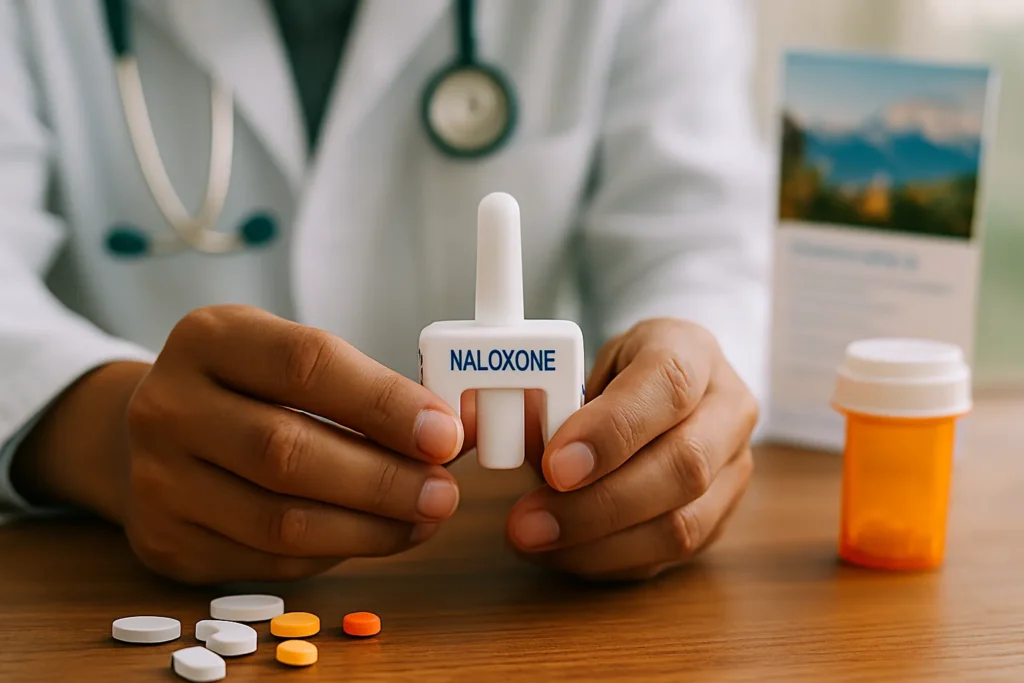Life, Death, and a Vital Lifeline: Naloxone’s Unyielding Importance
If you found someone slumped on a Denver sidewalk, blue-lipped and barely breathing, would you know what to do? Across Colorado, that scene has replayed thousands of times — but recently, more often than not, there’s been a way back. That’s thanks to naloxone, the overdose-reversal drug whose statewide reach is about to expand thanks to a $3 million grant from opioid settlement funds, announced by Attorney General Phil Weiser. The money arrives at a pivotal time, with Colorado seeing a 31% drop in fentanyl deaths and an overall 15.6% decline in drug overdose deaths in 2024, according to new CDC data.
Ask Rica Rodriguez, executive director of Promotores de Esperanza and a three-time overdose survivor, about naloxone. Without hesitation, she credits it—and the community members who administered it—for saving her life. “Equitable access to naloxone isn’t just a policy slogan; it’s a moral imperative,” Rodriguez insists. Her advocacy, alongside that of Michael Miller, Jefferson County’s opioid initiative coordinator (himself an overdose survivor), powerfully underlines what the statistics can’t: behind every kit lies a story of hope interrupted, then restored.
The new funding, drawn from over $132 million Colorado secured in lawsuits against drug manufacturers and distributors who helped fuel the opioid crisis, will supply roughly 91,000 doses of naloxone. These doses are destined for nonprofits, law enforcement, schools, and harm reduction organizations across all 64 counties through the Naloxone Bulk Purchase Fund — a statewide mechanism to buy in bulk and distribute at no cost where it’s most urgently needed.
Politics, Policy, and the Uncertain Future of Harm Reduction
Naloxone’s journey in Colorado has always run uphill. The Bulk Purchase Fund, established in 2019, has proven remarkably effective as the opioid crisis evolved—especially as synthetic opioids like fentanyl swept across the state. Yet the fund lacks a recurring revenue source. That reality casts a long shadow: as it stands, the $3 million grant will keep naloxone flowing only through June 2026.
Amid cheers for this short-term win, questions about sustainability press hard. Federal public health dollars, so crucial for state programs, are under existential threat. Colorado is among several states grappling with the fallout from federal cuts, including the Trump administration’s proposed termination of $11 billion in support. Attorney General Weiser, who’s seeking the governor’s office in 2026, has criticized these cuts and signaled the state’s intent to challenge the decision in court.
“For every dollar we invest in harm reduction, we multiply the lives saved and families kept whole.” — Phil Weiser, Colorado Attorney General
What kind of Colorado do you want? A state that invests in saving lives or one that lets ideology trump evidence? The evidence on naloxone is overwhelming: Harvard public health expert Dr. Sarah Wakeman points to dozens of studies showing that wider access to naloxone not only saves individual lives but also reduces long-term health care costs and hospitalizations. By contrast, policies championed by many conservatives—tighter restrictions on harm reduction, more punitive approaches—haven’t dented the crisis but have worsened it by pushing vulnerable people further into the shadows.
Beyond that, entrenched stigmas about addiction, often stoked by right-wing punditry, continue to undermine harm reduction. Critics claim free naloxone “enables” drug use, but every credible health authority—from the CDC to the American Medical Association—emphatically rejects this narrative. It’s a false binary: saving a life today does not preclude addressing the root causes tomorrow. In fact, surviving an overdose is often the only thing that gives a person (and their family) the chance for recovery.
Survivors Speak: Culturally Competent Care & The Road Ahead
A closer look reveals profound disparities in who survives opioid overdoses. Communities of color, rural areas, and indigenous groups still face higher barriers to obtaining naloxone, either from lack of supply or from service models that fail to meet people where they are. Rodriguez’s group, Promotores de Esperanza, has pioneered culturally competent outreach, embedding overdose prevention into trusted community spaces. “If our services don’t reflect the communities we serve, people die—plain and simple,” she says.
The current funding, while significant, is also a sobering warning shot. The state’s victories—a remarkable decrease in fentanyl deaths and overall overdoses—are not irreversible. 2025 already shows a rise in overdose incidents in Denver, an early sign that the crisis will not pause while politics and budgets catch up. Without renewed funding, medication access will collapse in mid-2026, leaving frontline responders and at-risk populations exposed just as hard-won gains start to unravel.
It begs the question: Can Colorado—and the nation—move past partisan bickering and commit to an evidence-driven, justice-oriented response? According to a recent Pew Research Center survey, more than 70% of Americans support making naloxone widely available without prescription. That’s a mandate not just for politicians, but for all of us.
Harm reduction is not, and should never be, a luxury or afterthought. It is, as Weiser and survivor advocates make clear, the frontline of an ongoing, unfinished battle—one fought in schools, shelters, clinics, and homes. The Colorado experiment offers a glimpse of what’s possible when bold leadership and community engagement converge. But it is only a beginning.

